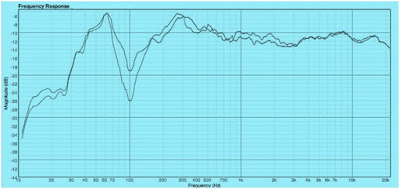SFRA stands for Sweep Frequency Response Analysis. This test is very reliable for condition monitoring of physical condition of transformer winding, core and above all core & winding integrity.
Why to conduct SFRA test?
The winding of Transformer may be subjected to mechanical stresses during transportation, heavy short circuit faults, transient switching impulses & lightening impulses etc. These mechanical stresses may cause displacement of transformer winding from their position and may also cause deformation of these winding.
SFRA Test can efficiently detect:
- Displacement of Transformer core
- Deformation & displacement of winding
- Faulty core grounds
- Collapse of partial winding
- Broken or loosen clamp connections
- Short circuited turns
- Open winding conditions.
Principle of SFRA Test:
As each of the electrical equipment is combination of R, L & C. In Transformer each winding turn is separated from other by paper insulation which acts as dielectric and windings themselves have inductance and resistance, a transformer can be considered as a complicated distributed network of resistance, inductance, and capacitance or in other words a Transformer is a complicated RLC circuit as shown in figure below. Because of this each winding of a transformer exhibits a particular frequency response.
In Sweep Frequency Response Analysis a sinusoidal voltage Vi is applied to one end of a winding and output voltage Vo is measured at the other end of the winding while keeping the other windings open.
As the winding is itself a distributed RLC circuit it will behave like RLC filter and gives different output voltages at different frequencies. That means if we go on increasing the frequency of the input signal without changing its voltage level we will get different output voltages at different frequencies depending upon the RLC nature of the winding. If we plot these output voltages against the corresponding frequencies we will get a particular pattern for a particular winding as shown in figure below.
But after transportation, heavy short circuit faults, transient switching impulses and lightening impulses etc, if we do same Sweep Frequency Response Analysis test and superimpose the present signature with the earlier pattern and observe some deviation between the two graphs / signature. Thus we can conclude that there is mechanical displacement / deformation in the Winding / Core.
Thus using SFRA test, we can say whether Transformer windings / core is OK or not. This method is simple yet reliable.
Thank you!


best and Simple explanation bro.. I always like your website. You are better than electrical4u
Thank you very much Mani! please share so that I may reach more students.
Thank you for such a clear explanation
You r doing a great job for every engineer..
Please explain about Partial discharge test of transformer.
This is a great stuff, well done Sir for such a detailed explanation. Grateful for sharing knowledge with others.
Thank you!